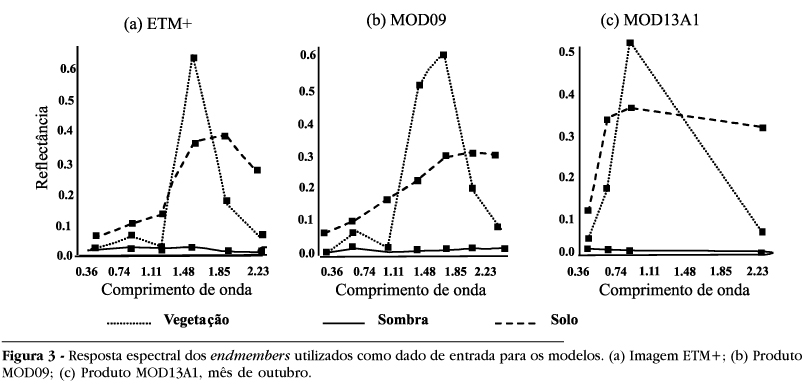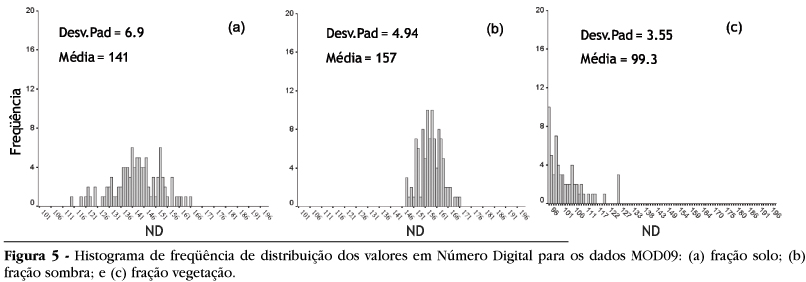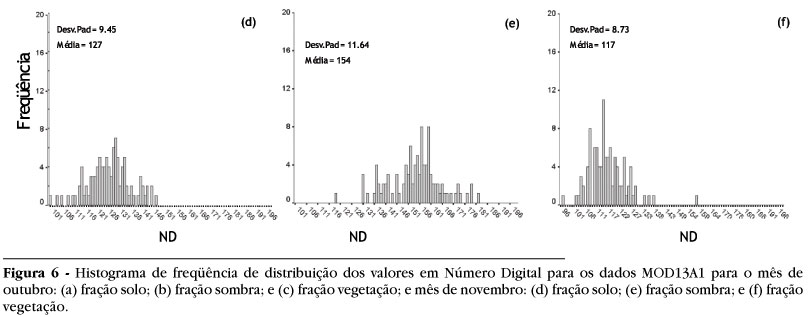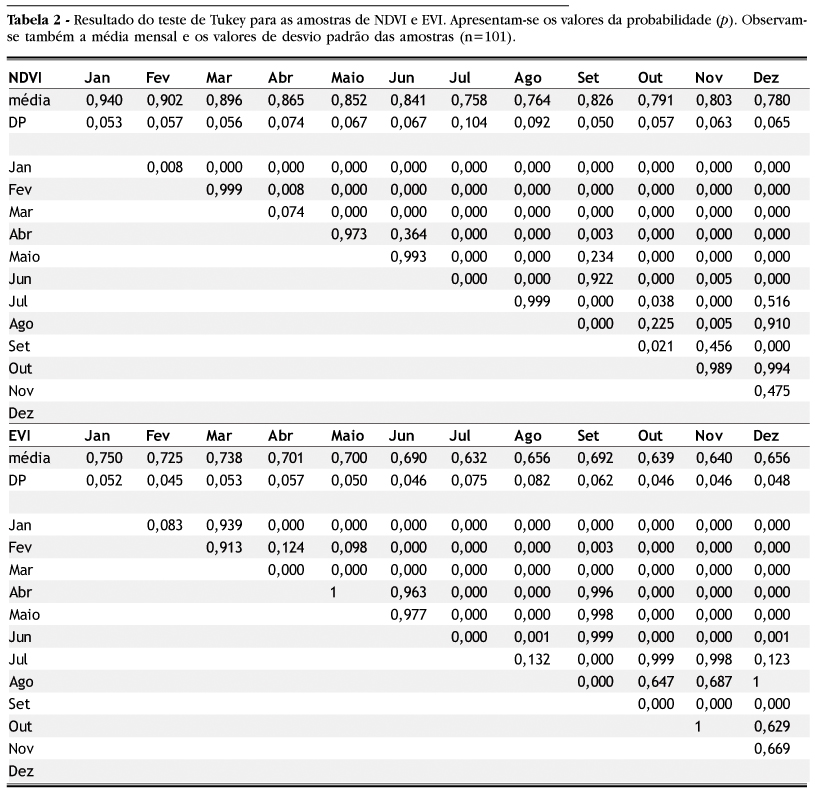The aim of this research was to evaluate the MODIS sensor data to detect and monitor recent burned scars areas. We used MODIS sensor surface reflectance images, including: MOD09 product (October 5th) and MOD13A1 product (October and November). We also used one year temporal series of the vegetation indices (VI) EVI and NDVI (MOD13A1 product) to evaluate its capability to detect recent burned scars areas. An ETM+ sensor image (October 5th) was used as basis for the samples polygons design and to evaluate the MODIS data due to its higher spatial resolution. The methodology focused on the application of a linear spectral mixing model on the reflectance images to generate the shade fraction. Regression analyses were carried out for the comparison between the shade percentage derived from the ETM+ image and the MODIS images. The multitemporal change detection over the VI images were evaluated based on the Tukey test. The results showed that the shade fraction image derived from the MOD09 product presented a R² = 0,66 (p < 0,01) with the ETM+. For the MOD13A1 product images were not found a significant relationship. The VI over the same samples polygons presented seasonal variations during the year. Even though, was not observed a significant decrease in their values on the months that we detect the burned scars. We conclude that the MOD09 product was more efficient than the MOD13A1 product to detect burn scars. The multitemporal analysis of the VI suggested that it is not possible to detect this same pattern over the study area.
MODIS sensor; burned areas; fraction images










